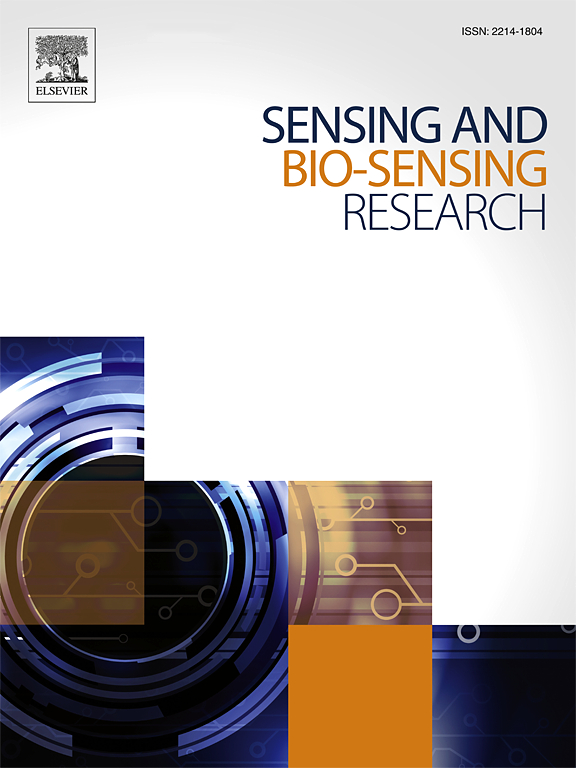Machine learning-enhanced terahertz plasmonic biosensor based on MXene-gold nanostructures for tuberculosis detection
IF 4.9
Q1 CHEMISTRY, ANALYTICAL
引用次数: 0
Abstract
This study presents a terahertz hybrid plasmonic biosensor utilizing MXene‑gold nanocomposites for tuberculosis detection. COMSOL Multiphysics simulations were employed to optimize sensor performance across varying chemical potential, incident angle, and resonator dimensions. The optimized configuration achieved a sensitivity of 1000 GHzRIU−1 and figure of merit of 22.22 RIU−1, with a strong inverse linear relationship between resonance frequency and TB biomarker refractive indices (R2 = 0.981). A machine learning framework based on decision tree regression was developed to predict sensor behavior, achieving R2 values of 0.96, 0.92, and 0.88 for resonator dimensions, refractive index, and incident angle variations, respectively. The sensor platform offers significant potential for rapid, sensitive TB diagnostics in resource-limited settings.
基于mxene -金纳米结构的机器学习增强太赫兹等离子体生物传感器用于结核病检测
本研究提出了一种利用MXene - gold纳米复合材料用于结核病检测的太赫兹混合等离子体生物传感器。利用COMSOL多物理场模拟优化传感器在不同化学势、入射角和谐振腔尺寸下的性能。优化后的结构获得了1000 GHzRIU−1的灵敏度和22.22 RIU−1的优值,共振频率与TB生物标志物折射率之间存在很强的线性反比关系(R2 = 0.981)。开发了基于决策树回归的机器学习框架来预测传感器的行为,在谐振器尺寸、折射率和入射角变化方面分别获得了0.96、0.92和0.88的R2值。传感器平台为在资源有限的环境中进行快速、灵敏的结核病诊断提供了巨大的潜力。
本文章由计算机程序翻译,如有差异,请以英文原文为准。
求助全文
约1分钟内获得全文
求助全文
来源期刊

Sensing and Bio-Sensing Research
Engineering-Electrical and Electronic Engineering
CiteScore
10.70
自引率
3.80%
发文量
68
审稿时长
87 days
期刊介绍:
Sensing and Bio-Sensing Research is an open access journal dedicated to the research, design, development, and application of bio-sensing and sensing technologies. The editors will accept research papers, reviews, field trials, and validation studies that are of significant relevance. These submissions should describe new concepts, enhance understanding of the field, or offer insights into the practical application, manufacturing, and commercialization of bio-sensing and sensing technologies.
The journal covers a wide range of topics, including sensing principles and mechanisms, new materials development for transducers and recognition components, fabrication technology, and various types of sensors such as optical, electrochemical, mass-sensitive, gas, biosensors, and more. It also includes environmental, process control, and biomedical applications, signal processing, chemometrics, optoelectronic, mechanical, thermal, and magnetic sensors, as well as interface electronics. Additionally, it covers sensor systems and applications, µTAS (Micro Total Analysis Systems), development of solid-state devices for transducing physical signals, and analytical devices incorporating biological materials.
 求助内容:
求助内容: 应助结果提醒方式:
应助结果提醒方式:


